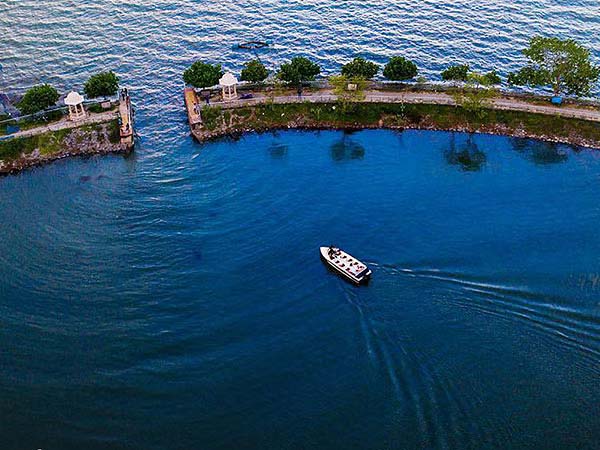The Indian Consulate General in New York on Thursday beckoned globetrotters to uncover the serene allure of Chilika Lake, ensconced in the Indian state of Odisha.
Championing Chilika as Asia’s preeminent brackish water lagoon, they implore adventurers to bask in its gleaming waters and unearth a haven teeming with wildlife and cultural heritage, deeming it indispensable for aficionados of nature.
In a communique on X, the Indian consulate in New York proclaimed, “Discover the tranquil charm of Chilika Lake, Asia’s largest brackish water lagoon, nestled in Odisha’s heart! Traverse its glistening waters and uncover a refuge for wildlife and culture. An essential destination for nature lovers!”
Situated on India’s eastern seaboard and linked to the Bay of Bengal by a slender sea mouth, Chilika is a lagoon of remarkable vitality. As the most expansive brackish water lagoon with an estuarine nature, it stretches along the east coast, serving as the largest wintering ground for migratory waterfowl on the Indian subcontinent.
A veritable biodiversity hotspot, Chilika hosts myriad rare, vulnerable, and endangered species, many of which are cataloged in the IUCN Red List of Threatened Animals, as noted by the Chilika Development Authority. A comprehensive survey by the Zoological Survey of India between 1985-87 documented over 800 species inhabiting the lagoon and its environs.
This impressive inventory includes several rare, threatened, and endangered species, such as the elusive Barakudia limbless skink. Due to its abundant biodiversity and ecological import, Chilika earned the distinction of being India’s inaugural “Ramsar Site.” Additionally, Nalaban Island within the lagoon is recognized as a bird sanctuary under the Wildlife (Protection) Act.
The lagoon is also earmarked as a priority site for conservation and management by the National Wetlands, Mangroves, and Coral Reefs Committee of the Ministry of Environment and Forests, Government of India. It is a prodigious ecosystem, rich in fishery resources, supporting the livelihoods of over 0.15 million fisherfolk residing in its vicinity.
Chilika’s expanse oscillates between 1,165 and 900 square kilometers during the monsoon and summer seasons, respectively. A 32-kilometer-long, slender outer channel links the main lagoon to the Bay of Bengal near the village of Motto. The channel’s mouth, which connects to the sea, lies near the northeastern extremity of the lagoon.
During the arid months from December to June, high tides near this inlet usher in saltwater through the channel. With the advent of the monsoon, the inflow from 52 rivers and streams into Chilika increases, causing freshwater currents that gradually displace the seawater. The littoral drift along the east coast continuously shifts the position of the inlet mouth.
The lagoon can be categorically segmented into four ecological zones based on salinity and depth: the southern zone, central zone, northern zone, and outer channel. Scattered within the lagoon are various islands, both populated and desolate, notable among them being Krushnaprasad, Nalaban, Kalijai, Somolo, Honeymoon, Breakfast, and Birds Island.




